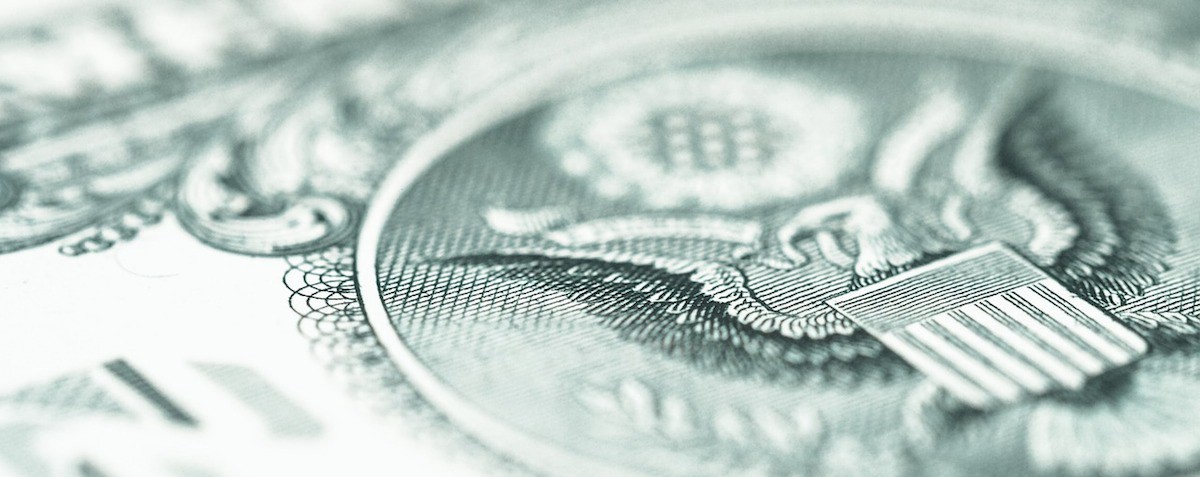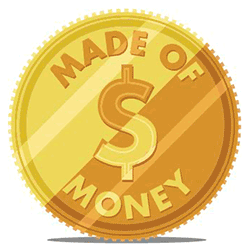

Our Made of Money sections looks at the future of money. We’ve compiled a reading + listening + watch list that should bring you into the thick of the current discussions around global economics, cashless societies, and the difference between digital and “crypto” currencies.

“Being all equal and independent, no one ought to harm another in his life, health, liberty, or possessions.”
–John Locke, 1689

Start Here
- The Wealth of Nations
By Adam Smith [1776, available for free in digital form]
One of the earliest modern economists, Scotsman Adam Smith was part of a new breed of 18th-century thinkers. In here, you’ll find the origins of basic financial tenets that still frame economics today: the “invisible hand” of free markets, division of labor, wage specifics, international treaties of commerce, and precisely how to grow a society toward opulence.

Then Try
- Learn to Earn: A Beginner’s Guide to the Basics of Investing and Business
Peter Lynch and John Rothchild [1995]
Even if you’re not interested in the stock market, it’s worth perusing the first chapter of this book, “A Short History of Capitalism,” to get a sense of where global trade and national banks have their roots. All the better that it explains the evolution from unpaid serfdom to capitalism in language meant for high-schoolers. I read the whole thing with the intention of starting an investment portfolio but do love to offer up some obscure factoids every once and again–like how the world’s first stock exchange dates back to 1602, with bartering for shares of the United Dutch East India Company on a bridge in Amsterdam.
- Limits to Growth
By Donella Meadows, Dennis Meadows, Jorgen Randers, and William Behrens [1972]
Nearly 45 years ago, environmental scientists from MIT created a computing model that projected and analyzed the future of global resource consumption. Even after adjusting agricultural productivity, birth control rates, and certain environmental precautions, they ultimately concluded that humanity was headed for global disaster sometime around 2030. Often credited with launching the environmental movement, they published an update in 2004.

Go Modern
Now that we’ve covered a bit of money’s history with full-length books, let’s dig into some more current web reads about the many facets of modern money. We’ve organized them by section so you can consider a number of (sometimes conflicting) viewpoints about the same topics at once.
Markets
- “A Quick Rundown of Everything We Know (and Often Forget) About the Economy“
Allison Schrager, Quartz [5-minute read] - “All You Need to Know About Why Things Fell Apart“
Michael Lewis, Bloomberg [5-minute read] - “Exponential Economist Meets Finite Physicist“
Tom Murphy, Do the Math [20-minute read] - “Around the World in Series A’s“
Jason Rowley, Mattermark [9-minute read]
Cash Money
- “Nickeled and Dimed: Would the United States Save Money by Switching to a Cashless Society?“
Jeremy Stahl, Slate [6-minute read] - “Despite Many Usurpers, Cash Is Still King“
The Economist [2-minute read] - “For U.S. Women, Currency Is Power“
Johanna Berkman, New York Daily News [3-minute read] - “Three Days That Saved the Euro“
Ian Traynor, The Guardian [30-minute read]
Virtual Currency
- “How to Explain Bitcoin to Your Mom!“
Rami Niemi and Rachel Abrams, The New York Times [3-minute read, interactive comic] - “10 Things You Should Know About Bitcoin and Digital Currencies“
Lyndsey Gilpin, TechRepublic [8-minute read] - “The Resolution of the Bitcoin Experiment“
Mike Hearn, Medium [18-minute read] - “The Schism Over Bitcoin Is How Bitcoin Is Supposed to Work“
Cade Metz, Wired [9-minute read]
These, Because They’re Fun
- “How Would You Pull a Big Short in 2016?“
Paul Mason, The Guardian [4-minute read] - “An Exploration of Banknotes Design“
Julia May, Smashing Magazine [17-minute read] - “Diamonds Are Bullshit“
Rohin Dhar, Princeonomics [12-minute read] - “Bang for Your Buck: Two Dozen People–a Banker, a Sex Worker, a Pastor, “the World’s First Publicly Traded Person”–Tell Us the Best Way to Invest a Single Dollar“
Melissa Batchelor Warnke, The Morning News [9-minute read] - “Why I Bought a House in Detroit for $500“
Drew Philp, BuzzFeed [30-minute read]

Lend an Ear
- Planet Money podcast
NPR [20-minute listens, available to stream or download here] - “Fixing the World, Bang-for-the-Buck Edition”
Freakonomics Radio, rebroadcast December 2015 [42-minute listen, podcast available to stream or on iTunes] - “The True Story of the Gender Pay Gap”
Freakonomics Radio, February 2016 [56-minute listen, podcast available to stream or on iTunes]

Take a Look
A Map of Every Country’s Debt
Here’s an interactive look at every nation’s debt scaled against its GDP ratio. In this case, debt is measured in dollars and GDP is measured in the value of goods and services produced each year.

How the U.S. Dollar Spread Across the World
Check out this unnarrated visual interactive tracking the spread of the dollar as the reserve-based currency from Howmuch.net–which has produced a number of other fantastic data maps and short money explainers. It’s set against a rather dramatic dance club beat for your enjoyment. [4-minute Vimeo clip]
Money As Debt
An animated feature documentary by videographer Paul Grignon explaining, in his words, “the perversity of today’s money-debt system.” [47-minute YouTube clip]
What Causes Economic Bubbles?
Still confused about the dot-com bubble burst of 2000? This smart video about tulip rage will help. [4-minute TEDEd clip on YouTube]
The Big Short
A 2015 Oscar-nominated feature film based on the Michael Lewis book about the U.S subprime mortgage crisis. Brad Pitt’s in it. So is Ryan Gosling. And it’s actually really funny. [4-minute YouTube trailer, 2-hour and 10-minute movie in theaters]


How We Get To Next was a magazine that explored the future of science, technology, and culture from 2014 to 2019. This article is part of our Made of Money section, which covers the future of cash, finance, economics, and trade. Click the logo to read more.
